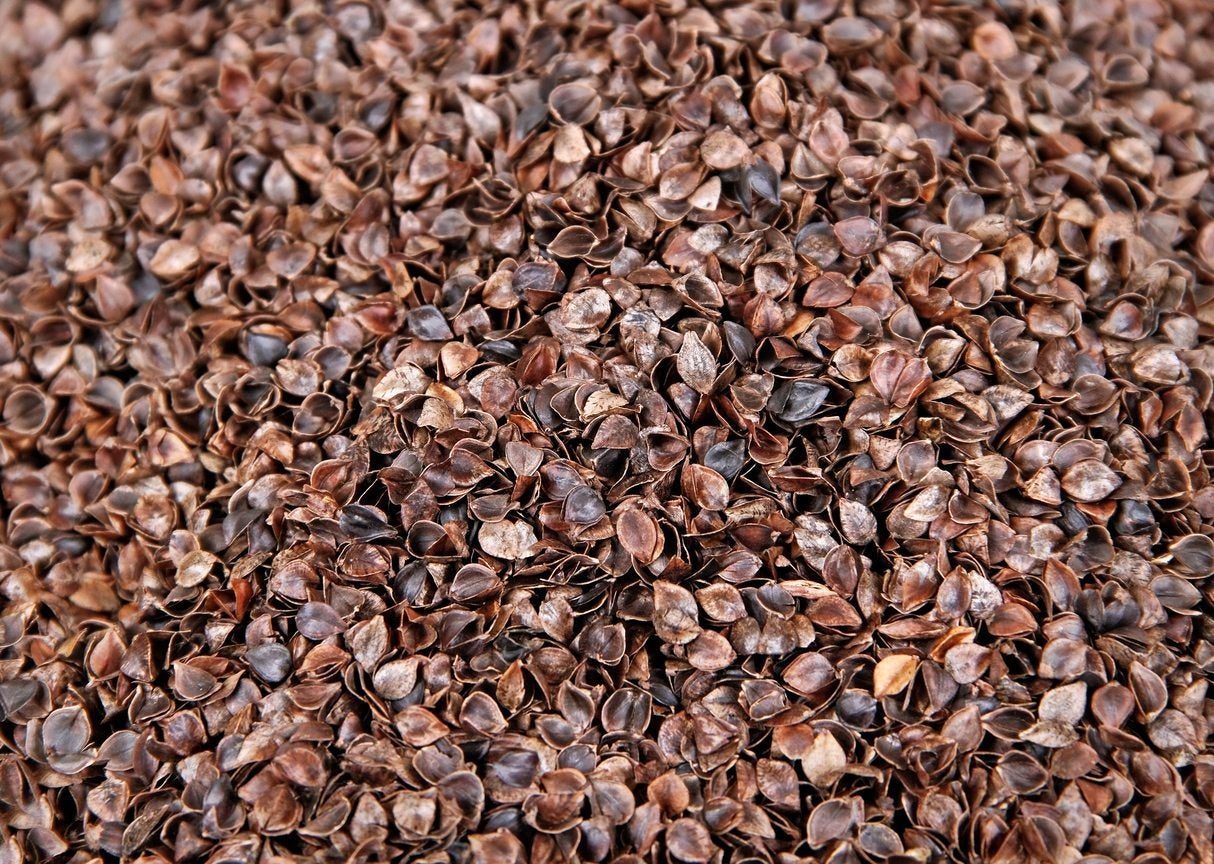Buckwheat Hull Mulch: Should I Mulch With Buckwheat Hulls


Mulch is always a good option for garden beds, and organic mulch is often the best choice. There are a lot of organic mulches out there, however, and it can be hard to choose just the right one. Buckwheat hulls are a mulching material that don’t get quite as much attention as woodchips or bark, but they can be very effective and attractive. Keep reading to learn more about mulching with buckwheat hulls and where to find buckwheat hull mulch.
Buckwheat Hull Information
What are buckwheat hulls? Buckwheat is not a grain as some people believe, but rather a seed that can be harvested and eaten (odds are you’ve heard of buckwheat flour). When buckwheat is milled, the hard outside of the seed, or the hull, is separated and left behind. These hard, dark brown, lightweight casings are sold separately, sometimes as pillow or craft stuffing, but often as garden mulch. If you haven’t heard of buckwheat hulls before, they might not be readily available in your area. They tend to be sold only near facilities that mill buckwheat. (There’s one in Upstate New York that I know, from personal experience, sells as far afield as Rhode Island).
Should I Mulch with Buckwheat Hulls?
Mulching with buckwheat hulls is very effective. An inch thick (2.5 cm.) layer will work wonders to suppress weeds and keep soil moist, while allowing for good soil ventilation. The hulls are very small and lightweight, and they sometimes run the risk of blowing away in the wind. This isn’t much of a problem as long as the hulls are moistened every now and again when the garden is watered. The only real problem is the cost, as buckwheat hulls are considerably more expensive than some other mulch options. If you’re willing to pay a little bit more, however, buckwheat hull mulch makes for a very attractive, textured, even cover for both vegetable and flower beds.
Gardening tips, videos, info and more delivered right to your inbox!
Sign up for the Gardening Know How newsletter today and receive a free copy of our e-book "How to Grow Delicious Tomatoes".

The only child of a horticulturist and an English teacher, Liz Baessler was destined to become a gardening editor. She has been with Gardening Know how since 2015, and a Senior Editor since 2020. She holds a BA in English from Brandeis University and an MA in English from the University of Geneva, Switzerland. After years of gardening in containers and community garden plots, she finally has a backyard of her own, which she is systematically filling with vegetables and flowers.